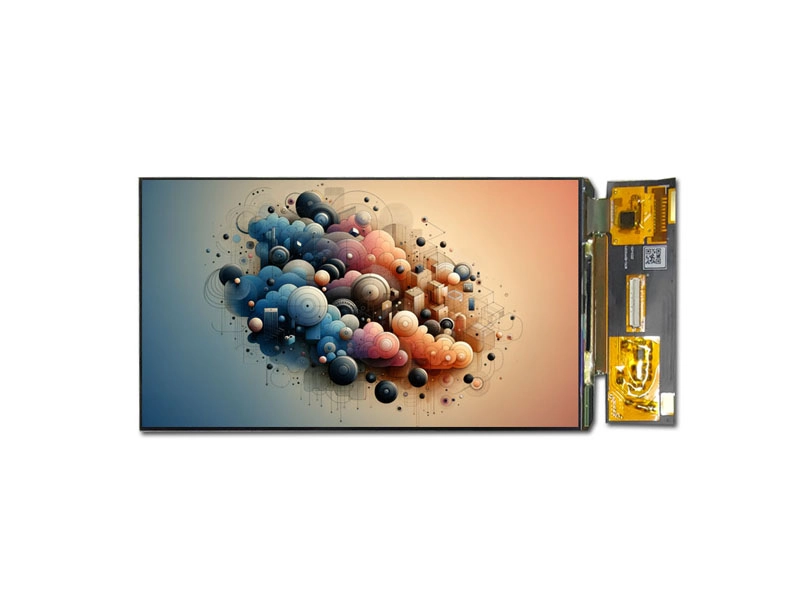The question of whether AMOLED display is suitable for industrial control has sparked extensive discussions, primarily focusing on its performance advantages, environmental adaptability, and cost considerations. In this article, we will delve into these topics to analyze both the benefits and drawbacks of AMOLED in industrial settings.
Performance Advantages and Environmental Adaptability in Industrial Control
High Compatibility Between Technological Features and Industrial Requirements
AMOLED’s self-emissive nature enables a contrast ratio of up to 100,000:1, making it ideal for precisely detecting minute defects in industrial inspections. For example, North China Industrial Control’s machine vision systems utilize AMOLED displays to visualize wafer inspection data in real-time, paired with embedded AI motherboards for automated defect recognition. This solution has been deployed in semiconductor production lines. Additionally, its ultra-fast response time (0.2ms) eliminates motion blur, ensuring clear visualization of dynamic data such as patient vital signs in medical monitoring devices.

Wide Temperature Range and High Reliability for Harsh Environments
Leading AMOLED products can operate stably within a temperature range of -40°C to 85°C, meeting the demands of high-temperature scenarios in metallurgy and petrochemical industries, as well as low-temperature environments in polar operations.
Flexible Design Revolutionizes Industrial Equipment Integration
The bendable nature of flexible AMOLED panels offers unprecedented possibilities for device integration. In healthcare, foldable medical carts incorporate 1.5mm-radius AMOLED displays integrated with diagnostic equipment, enhancing efficiency in telemedicine. In automotive applications, Wrap-around L-shaped designs integrate dashboards, rearview mirrors, and control panels into a single flexible screen, optimizing cockpit space utilization.
Energy Efficiency through Low Power Consumption and High Brightness
AMOLED consumes minimal power when displaying black content, and its dynamic refresh rate technology significantly extends the battery life of mobile industrial devices. With high-brightness capabilities (e.g., 3000 nits), these displays remain legible under direct sunlight, making them suitable for outdoor machinery such as port cranes and agricultural equipment.
Key Challenges: Technological Bottlenecks and Industrial Chain Limitations
Cost Constraints Hinder Large-Scale Adoption
While the cost gap between AMOLED and LCD is narrowing, QHD-resolution AMOLED panels still cost approximately 30% more. Flexible AMOLEDs, with their PI substrates and COF packaging, are 25% pricier than rigid panels. For mass-deployed industrial automation systems, cost remains a significant barrier.
Burn-In Risk and Lifespan Management
Prolonged display of static images (e.g., industrial instrument interface) may cause uneven pixel aging, leading to burn-in effects. Although manufacturers have extended lifespan to over 15,000 hours through dynamic refresh algorithms and material improvements, continuous-operation scenarios like medical devices still require caution. Software tools such as Pixel Filter mitigate burn-in by rotating pixel usage, but at the expense of display sharpness.
Brightness Uniformity and Complex Drive Circuits
AMOLEDs are susceptible to Mura effects (brightness inconsistencies) caused by TFT threshold voltage drift and OLED degradation. While advanced RRAM-driven chips have improved uniformity by 30%, the complexity of these circuits increases design challenges and manufacturing costs.
Supply Chain Maturity and Certification Barriers
Industrial devices must meet stringent certifications (e.g., military, automotive standards), whereas AMOLED supply chains are currently optimized for consumer electronics. Customization capabilities for industrial-grade specifications remain limited.
Conclusion
After reviewing the above analysis, it is evident that AMOLED offers significant performance advantages for industrial control applications. By selecting AMOLED panels with stable production lines and suitable sizes, businesses can balance cost control with display reliability and color accuracy. Zhongyou Touch Display has already integrated several high-performance, cost-effective AMOLED solutions tailored for industrial use. Interested buyers are encouraged to contact us for more information.